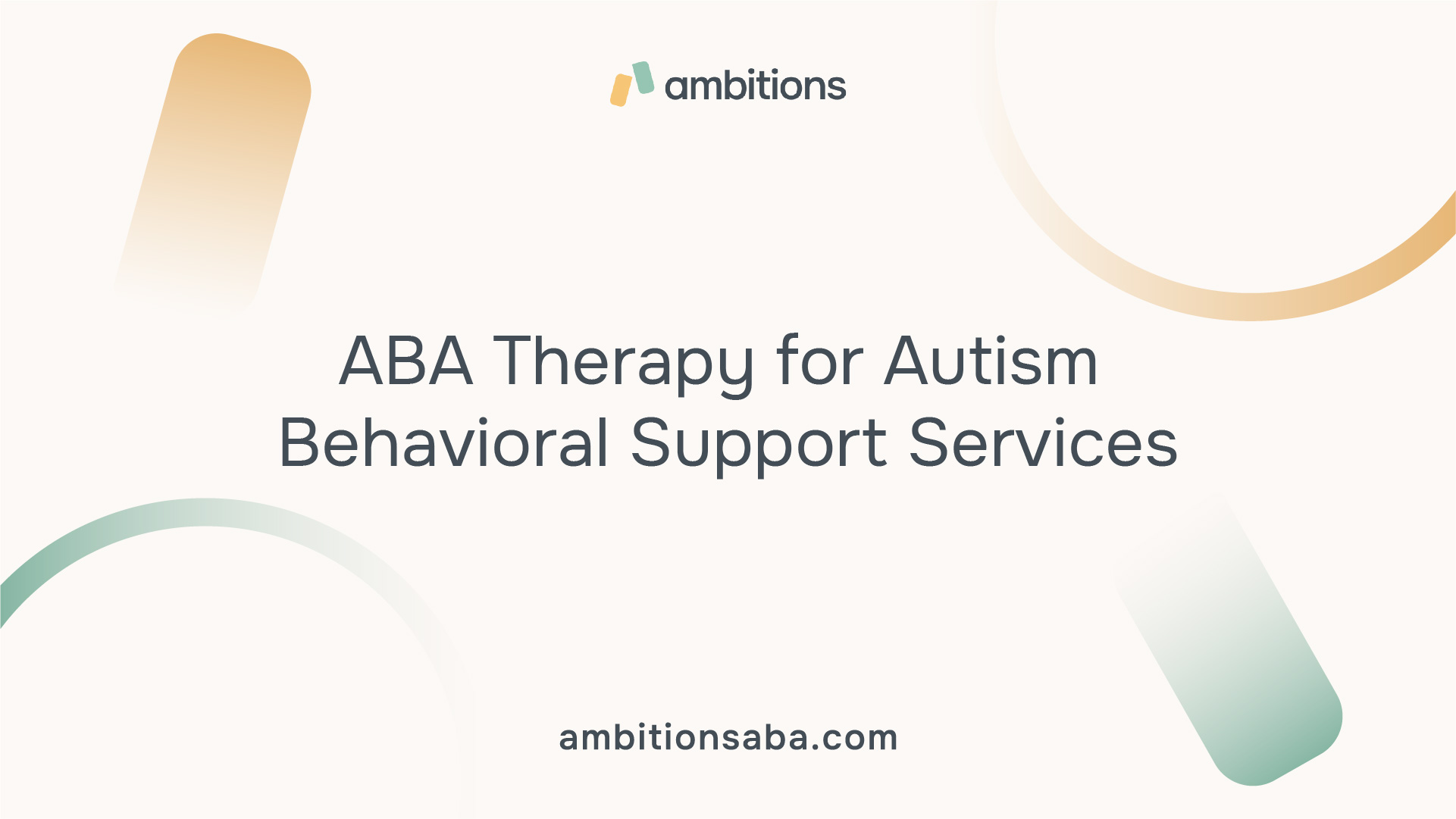Building Resilience and Well-Being through ABA Therapy
Understanding ABA Therapy
Applied Behavior Analysis (ABA) therapy has become a widely recognized intervention for children diagnosed with autism spectrum disorder (ASD). This approach focuses on using behavioral principles to bring about meaningful changes in behavior and learning.

History of ABA
The use of ABA therapy for children with autism began in the 1960s. Parents and therapists started to implement these techniques to address challenging behaviors associated with autism and related developmental disorders. The therapy is grounded in the principles of behavior modification developed by psychologist B.F. Skinner, who introduced operant conditioning. This method involves modifying behavior by altering the consequences that follow it.
Timeline of Key Events in ABA Therapy
YearEvent1960sIntroduction of ABA techniques to support children with autism.1990sIncreased recognition of ABA as an evidence-based practice.2000sNumerous studies establish effectiveness of ABA for autism.PresentABA remains a leading approach in autism behavioral support.
Impact of ABA on Children with Autism
Research supports the effectiveness of ABA therapy in improving various aspects of functioning for children diagnosed with autism. More than 20 studies indicate that intensive and long-term engagement with ABA principles leads to substantial improvements in areas such as intellectual functioning, language development, daily living skills, and social functioning.
Improvement AreaDescriptionIntellectual FunctioningEnhanced cognitive abilities and learning capacity.Language DevelopmentGrowth in both receptive and expressive language skills.Daily Living SkillsDevelopment of essential life skills needed for independence.Social FunctioningImproved social interactions and relationships with peers.
ABA therapy not only supports children in developing crucial skills but also provides families with strategies to reinforce positive behaviors at home. The structured nature of ABA allows for consistent application of techniques across various settings, promoting a holistic approach to learning and behavior management.
Parents seeking comprehensive information on how to access necessary services can explore options through ABA therapy for autism support services or ABA therapy for autism behavioral health centers.
Key Players in ABA Therapy
In the realm of ABA therapy, several key players collaborate to provide effective support and services for children diagnosed with autism. Each has a distinct role in ensuring the success of the therapy programs.
Role of BCBA
A board-certified behavior analyst (BCBA) is integral to the success of ABA therapy. The BCBA is responsible for designing and overseeing the entire ABA program, tailoring it to meet each child's specific skills, needs, interests, preferences, and family dynamics. This personalized approach helps maximize the efficacy of the therapy, making it more relevant and engaging for the child [1].
The BCBA also evaluates the progress of the child, making necessary adjustments to the program based on ongoing assessments. They are required to meet specific certification standards, ensuring they possess the expertise to implement behavior analysis effectively.
Key BCBA ResponsibilitiesDescriptionDesigning ProgramsCustomizes plans to suit individual learner needs.Overseeing TherapyMonitors and supervises all aspects of the ABA program.Data AnalysisReviews progress data to refine and adjust therapy plans.
Involvement of Therapists and RBTs
In addition to the BCBA, therapists and registered behavior technicians (RBTs) play a crucial role in the day-to-day implementation of ABA therapy. These trained professionals work directly with children, practicing skills and achieving individual goals set by the BCBA.
RBTs undergo specific training and supervision by the BCBA to ensure they are well-equipped to provide high-quality support. Their hands-on approach allows them to engage with children in real-world settings, reinforcing learned behaviors through consistent practice and positive reinforcement.
RoleDescriptionTherapists (RBTs)Engage directly with children to implement therapy techniques.Skill PracticeAssist in practicing and generalizing learned skills in various settings.ObservationProvide feedback to the BCBA on the child's progress and challenges.
The collaboration between BCBAs and RBTs is essential for ensuring the effectiveness of ABA therapy. Their combined efforts allow for a structured and supportive environment where children can thrive. For more information on services offered by ABA programs, visit our page on aba therapy for autism behavioral support services.
Scientific Validation of ABA
Endorsement by Surgeon General and APA
Applied Behavior Analysis (ABA) therapy has gained recognition as an evidence-based best practice for treating children diagnosed with autism spectrum disorder (ASD). The U.S. Surgeon General and the American Psychological Association (APA) have both endorsed ABA as a scientifically validated approach. This endorsement indicates that ABA therapy has successfully undergone rigorous scientific testing to demonstrate its effectiveness, quality, and usefulness.
More than 20 studies substantiate the positive impact of intensive and long-term ABA therapy on individuals with autism. The endorsement by reputable organizations such as Autism Speaks and the Association for Behavior Analysis International provides parents with confidence in the potential benefits of ABA therapy for their children.
OrganizationEndorsementU.S. Surgeon GeneralEvidence-based best practice for autismAmerican Psychological AssociationEvidence-based approach for autism treatmentAutism SpeaksSupports use of ABA for autism therapyAssociation for Behavior Analysis InternationalRecognizes ABA as effective for ASD
Effectiveness of ABA Programs
The effectiveness of ABA programs is well-documented in the literature, showcasing how these interventions lead to significant improvements in various areas for children with autism. Techniques such as shaping, discrete trial training, and pivotal response training are integral to ABA, showing their capacity to enhance skills and mitigate challenging behaviors.
Research indicates that intensive and long-term ABA can lead to meaningful advancements in intellectual capabilities, language acquisition, daily living skills, and social interactions among individuals with ASD. This body of evidence supports the assertion that ABA therapy remains the most effective intervention approach for addressing the unique challenges faced by children with autism.
In summary, the substantial endorsements from leading health organizations and the proven effectiveness of ABA programs underscore the importance of ABA therapy as a key behavioral support service for children on the autism spectrum. For additional insights on ABA therapy, refer to aba therapy for autism behavioral support services.
ABA Therapy Across Ages
ABA therapy is adaptable and effective for individuals diagnosed with autism across various life stages, providing necessary support tailored to each age group.
Applicability to Different Age Groups
Applied Behavior Analysis (ABA) can be beneficial from early childhood through adulthood. Programs designed for children with autism have been in existence since the 1960s. ABA therapy is not limited to children; it also assists adults with autism and other behavioral disorders. This capability demonstrates that ABA can support individuals of different ages in developing social, communication, and adaptive skills.
Age GroupApplicabilityEarly ChildhoodBuilding foundational skills through playMiddle ChildhoodFocusing on social interactions and academic supportAdolescencePreparing for independence and life skillsAdulthoodEnhancing workplace skills and daily living
Flexibility in ABA Programs
One of the strongest benefits of ABA therapy is its flexibility. Programs can be tailored to fit the unique needs of each individual, encouraging participation in various activities while addressing specific challenges. This adaptability allows therapists to create personalized plans that focus on the development of key skills based on the individual's age and unique challenges.
ABA therapy can involve a variety of techniques such as discrete trial training, positive reinforcement, and natural environment teaching, ensuring that the approach is appropriate for the individual's context [7].
Parents seeking support can explore diverse options, including ABA therapy for autism family services, ABA therapy for autism skill services, and ABA therapy for autism behavioral support centers. Each of these provides a different focus, catering to specific needs of children or adults with autism.
Approaches and Techniques in ABA
ABA therapy employs a variety of approaches and techniques to help children with autism develop essential skills and behaviors. Two commonly used strategies are positive reinforcement and Discrete Trial Training (DTT).
Positive Reinforcement
Positive reinforcement is a fundamental component of ABA therapy. This technique involves rewarding a child immediately after they complete a task correctly or demonstrate a desired behavior. By associating positive reinforcement with specific behaviors, it increases the likelihood that these behaviors will be repeated. Rewards can take the form of praise, tokens, or treats, creating a motivating environment for the child [8].
The principle of positive reinforcement is based on the work of psychologist B.F. Skinner, who developed the theory of operant conditioning. In this approach, behaviors are modified through the manipulation of consequences, enabling parents and therapists to encourage healthy behaviors in children. Parents may use variations of these principles when rewarding appropriate actions in their children.
BehaviorReward TypeExampleCompleting a taskPraise"Great job on your homework!"Sharing toysToken"You earned a sticker for sharing!"Following directionsTreat"You can have a cookie for listening!"
Discrete Trial Training
Discrete Trial Training (DTT) is another prominent technique in ABA therapy. This method breaks down skills into smaller, manageable components and teaches them one at a time. After each correct response, positive reinforcement is provided to encourage the child to continue making progress.
Originally, DTT included aversive reinforcement methods, such as punishment; however, contemporary ABA practices have shifted away from these techniques. Today, DTT focuses on repetition and reinforcement without utilizing aversive methods. While DTT is effective for skill acquisition, some individuals express concerns that its repetitive nature may be challenging for children and question whether skills learned through DTT transfer to other settings [9].
In summary, both positive reinforcement and DTT play vital roles in ABA therapy. They provide parents and therapists with structured methods to foster skill development in children with autism. For further information on how these techniques impact behavioral support, check out our resources on ABA therapy for autism behavioral support services.
Addressing Concerns and Controversies
ABA therapy has been a widely used method for supporting children with autism spectrum disorder (ASD), but it is not without criticism. Understanding the concerns surrounding this approach can help parents make informed decisions regarding their child's treatment.
Criticisms of ABA Therapy
Critics of ABA therapy express concerns that it may place too much emphasis on getting autistic children to conform to neurotypical standards, which can suppress their natural behaviors. Some argue that this focus on conformity can overshadow the importance of embracing individuality and promoting self-advocacy.
Another criticism revolves around historical practices in ABA. The earliest forms of ABA, such as Discrete Trial Training (DTT), incorporated aversive reinforcement, including punishments. Although modern ABA has moved away from these methods, critics argue that the therapy's repetitive nature can still feel restrictive and may not enable children to generalize learned skills to different contexts.
Further concerns include the potential use of punishment-based procedures within ABA practices. Debates remain on the definitions of punishment and its effectiveness in behavior modification, alongside worries about possible negative side effects, including increased aggression or emotional distress.
Evolving Practices in ABA
In response to criticisms, ABA therapy has been continually evolving to better meet the needs of children with autism and their families. Modern ABA practices focus on positive reinforcement strategies, fostering a more supportive and understanding environment for autistic children.
As the field advances, practitioners in ABA therapy are recognizing the importance of promoting skills and fostering independence without losing sight of individuality. Other structured interventions, such as speech and language therapy, are being integrated into ABA programs, offering a more holistic approach to development and growth.
The involvement of families in developing personalized therapy plans has also increased, allowing for more tailored interventions that align with the unique values and preferences of each family. For information on tailored services, parents can explore ABA therapy for autism family services and ABA therapy for autism skill development programs.
The field of ABA is working diligently to address its historical discrepancies while maintaining a commitment to evidence-based practices that accommodate the diversity of needs among children on the autism spectrum. As awareness of the complexities within autism grows, the future of ABA therapy indicates a movement toward more inclusive and respectful methods that honor the individuality of every child.

